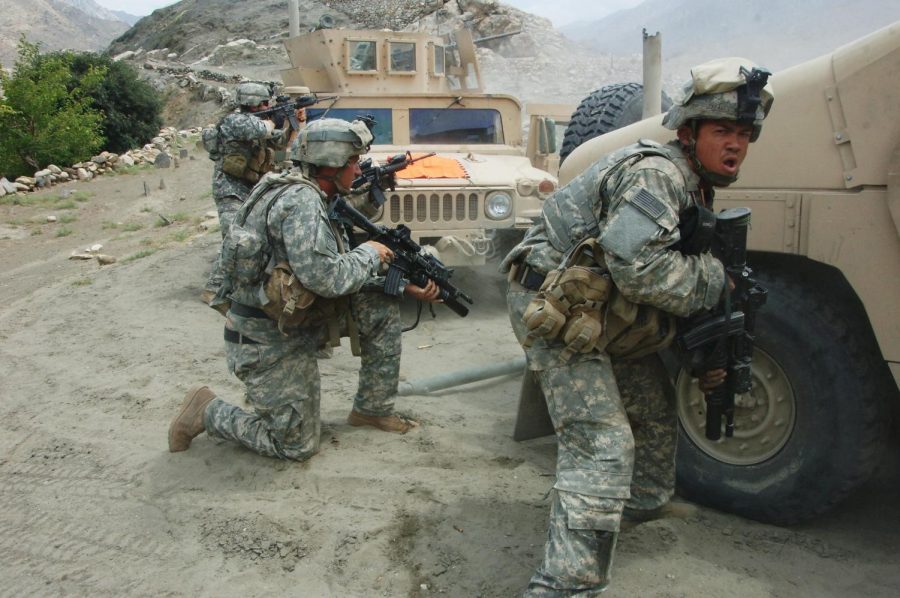America’s longest war comes to an end
U.S. troops fought the Taliban forces in Afghanistan for many years until President Biden ordered a troop withdrawal from the area.
Under the orders of President Biden, following the U.S.-Taliban agreement set in place by former President Trump, all U.S. troops are now out of Afghanistan.
“The last C-17 lifted off from Hamid Karzai International Airport on Aug. 30, at 3:29 p.m., east coast time, and the last manned aircraft is now clearing the air space above Afghanistan,” General Frank McKenzie, Commander of the U.S. Central Command, said.
Gen. McKenzie gave a speech on Aug. 30 addressing the troop withdrawal. He let the world know that the United States’ longest war, lasting almost 20 years, was finally over.
“While the military evacuation is complete, the diplomatic mission to ensure additional U.S. citizens and eligible Afghans who want to leave continues,” McKenzie said.
This means that even though the war is officially over, there is still a long road ahead of government officials in both the United States and Afghanistan to free the country and its people from Taliban control. The U.S. and some of its allied countries invaded Afghanistan to control the situation shortly after the Sept. 11, 2001 terror attacks. In a short amount of time, the invasion drove the Taliban and other Al-Qaeda leaders from power. The next steps taken by the U.S. were to invest billions of dollars in an attempt to rebuild Afghanistan and to fund and train a well-equipped militia. In the coming years, as the U.S. focused on other troubles following the threat of terrorism in Iraq, the Afghanistan government became entangled in corruption. The Taliban then regrouped in the rural regions of the country and in neighboring Pakistan. The Taliban captured large parts of rural Afghanistan and carried out near-daily assaults on Afghan security forces.
Yearning to put an end to the war, the Trump Administration signed a peace deal with the Taliban in February of 2020. President Joe Biden modified the deadline and extended it from May to August and then continued with the troop withdrawal, despite the Taliban’s rapid advancements and territory control across the country. On Sunday, Aug. 22, the Afghan President, Ashraf Ghani, fled the country and the Taliban officially took control of the capital city Kabul and the rest of Afghanistan.
The U.S. has made a valiant effort at moving people out of the country, having airlifted more than 114,000 people out of Kabul and 5,500 U.S. citizens. The Biden Administration said it expects the Taliban to continue allowing safe passage for Americans and others to leave Afghanistan after the U.S. military withdrawal is completed. That includes the thousands of at-risk Afghans who worked with the U.S. military, such as journalists who have been left behind.
There is still a concern for the safety of those who helped the U.S. and worry that the Taliban may retaliate against them. The situation following the Taliban’s takeover has proven to be a difficult task to handle and it leaves many wondering how the Biden Administration will take control of the situation at hand.



